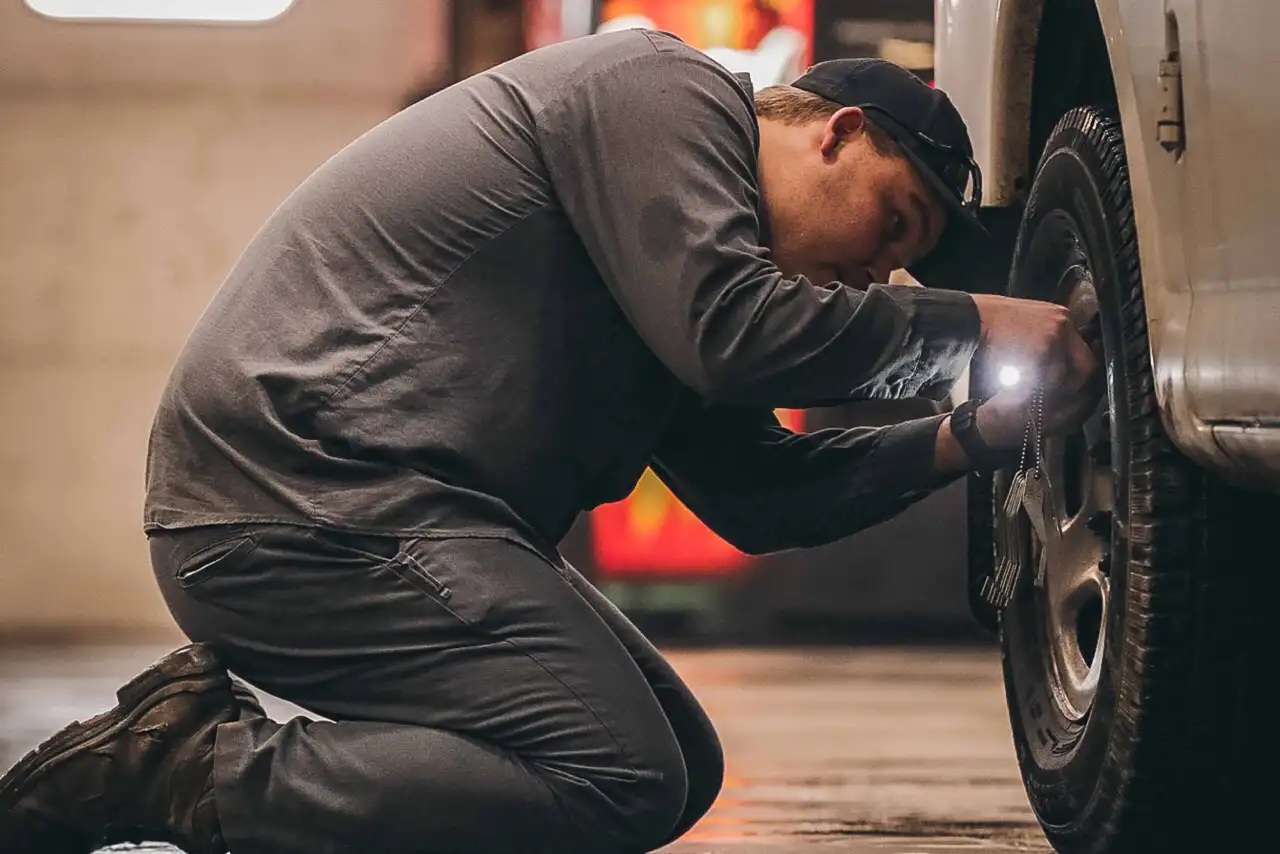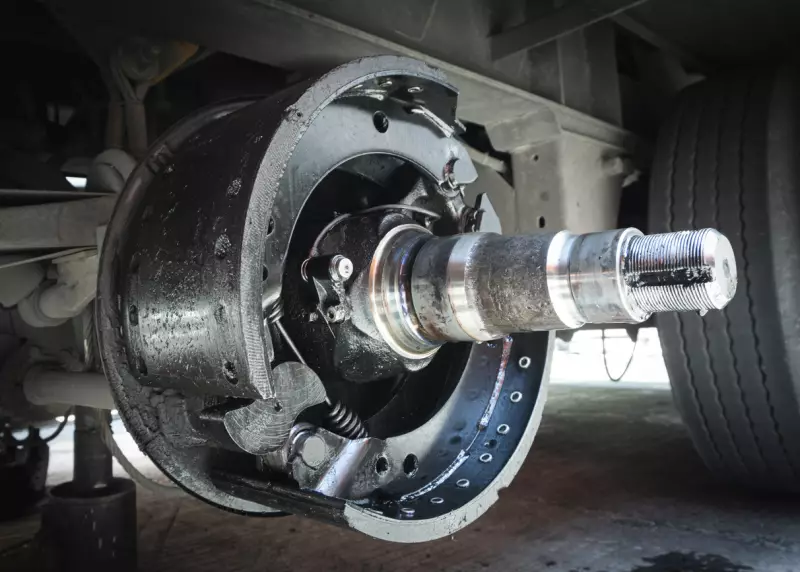


S-cam brakes, also known as cam brakes, are a type of braking mechanism widely used in heavy vehicles such as trucks, trailers, and wheeled machinery. These brakes play a crucial role in ensuring the safe and efficient operation of these vehicles, making it essential to understand their design, working principles, applications, maintenance requirements, and future advancements.

S-cam brakes derive their name from the distinct S-shaped cam that forms the core of this braking system. The camshaft, a rotating shaft with a typical length ranging from 4 to 25 inches, has this S-shaped cam at one end. When the brake is applied, the camshaft rotates, causing the cam to push against the brake shoes and force them against the brake drum. The resulting friction between the brake shoes and the rotating drum slows down or stops the vehicle.
The main components of an S-cam brake system are:
| Component | Description |
|---|---|
| Camshaft | The rotating shaft with the S-shaped cam at one end. |
| Brake Shoes | The friction material that presses against the brake drum when actuated by the cam. |
| Brake Drum | The rotating drum that the brake shoes make contact with to create friction and slow the vehicle. |
| Slack Adjusters | Mechanisms that adjust the distance between the brake shoes and the drum to compensate for wear. |
| Air Chambers | Convert the compressed air into mechanical force on the slack adjusters. |
| Return Springs | Pull the brake shoes away from the drum when the brakes are released. |
S-cam brakes offer several advantages that contribute to their widespread adoption in various heavy vehicle applications:
Simplicity and Cost-Effectiveness: The design relies on a rotating shaft, making it relatively straightforward and cost-effective to manufacture and maintain.
Compact Design: By locating the bulky air cylinders outside the wheel, S-cam brakes offer a more compact design compared to other braking systems, which is beneficial in applications where space is limited.
Self-Adjusting Capabilities: As the brake pads wear, the S-cam rotates more, causing the pads to move further and compensate for the wear. This self-adjusting feature helps maintain consistent braking performance and reduces the need for frequent manual adjustments.
High Braking Force: The cam mechanism amplifies the force applied to the brake shoes, providing strong braking power essential for heavy vehicles carrying heavy loads or operating in challenging conditions.
S-cam brakes are widely used in various heavy vehicle applications due to their reliability, durability, and braking performance:
Heavy-duty trucks and tractor-trailers
Commercial vehicles with air brake systems (e.g., buses, delivery trucks, construction vehicles)
Off-road construction and mining equipment
Agricultural machinery (e.g., tractors, harvesters, and other heavy-duty farm vehicles)
Proper maintenance and adjustment of S-cam brakes are crucial for ensuring their safe and efficient operation. Regular inspections, lubrication, and adjustments are necessary to compensate for brake shoe wear and ensure optimal braking performance.
| Maintenance Task | Description |
|---|---|
| Regular Inspections | Identify potential issues, such as wear or damage to brake components, and ensure proper functioning. |
| Lubrication | Lubricate the camshaft, slack adjusters, and other moving parts to reduce friction and wear. |
| Adjustments for Brake Shoe Wear | Adjust the slack adjusters to compensate for brake shoe wear and maintain the correct clearance between the shoes and the drum. |
| Checking Free Stroke and Slack Adjusters | Check the free stroke (the distance the brake chamber pushrod travels before engaging the brake mechanism) and slack adjuster settings to ensure proper brake adjustment. |
Procedures may involve:
Checking the free stroke
Adjusted chamber stroke
Slack adjuster settings
Improper adjustment can lead to premature wear, reduced braking performance, or even brake failure.
While S-cam brakes have been the industry standard for decades, air disc brakes (ADB) are gaining popularity as an alternative, particularly in newer vehicles. Air disc brakes offer several advantages over traditional drum brakes, including:
Reduced stopping distances
Less brake fade (temporary loss of braking power)
Longer service life
However, one of the primary factors influencing the choice between S-cam brakes and air disc brakes is cost. Air disc brakes are generally more expensive to manufacture and maintain than S-cam brakes, which can be a significant consideration for fleet operators and vehicle owners.

Ongoing research and development efforts are focused on improving the performance, durability, and efficiency of S-cam brakes:
Improvements in Materials and Coatings: Advancements in materials and coatings used in S-cam brake components aim to enhance durability, reduce wear, and improve braking performance, extending the service life of S-cam brakes.
Integration of Electronic Controls: The integration of electronic controls and monitoring systems can provide real-time data on brake performance, wear, and adjustment, enabling more efficient maintenance and reducing the risk of brake failure.
Enhanced Monitoring Systems: Advanced monitoring systems are being developed to track the condition of S-cam brake components and provide early warnings of potential issues, helping prevent unexpected brake failures and improving overall vehicle safety.
S-cam brakes remain a reliable and widely adopted braking solution for heavy vehicles, offering simplicity, compactness, self-adjusting capabilities, and strong braking power. While air disc brakes are emerging as an alternative, ongoing advancements in S-cam brake technology aim to improve their performance, durability, and efficiency further. As the demand for safe and efficient heavy vehicle operation continues to grow, the role of S-cam brakes in meeting these requirements remains crucial.
Slack adjusters are mechanisms that adjust the distance between the brake shoes and the drum to compensate for wear. They help maintain proper clearance and ensure consistent braking performance.
As the brake shoes wear, the S-cam rotates more, causing the shoes to move further and compensate for the wear. This self-adjusting feature reduces the need for frequent manual adjustments.
S-cam brakes offer simplicity, cost-effectiveness, compact design, self-adjusting capabilities, and high braking force, making them suitable for heavy vehicles.
S-cam brakes are widely used in heavy-duty trucks, tractor-trailers, commercial vehicles with air brake systems, off-road construction and mining equipment, and agricultural machinery.
Proper maintenance and adjustment ensure safe and efficient operation, compensate for brake shoe wear, and prevent premature wear, reduced braking performance, or brake failure.
Air disc brakes offer reduced stopping distances, less brake fade, and longer service life compared to S-cam brakes, but they are generally more expensive.
Future trends include improvements in materials and coatings, integration of electronic controls, and enhanced monitoring systems to improve performance, durability, and efficiency.
S-cam brakes create braking force by using the rotating S-shaped cam to push the brake shoes against the brake drum, creating friction and slowing down the vehicle.
Return springs pull the brake shoes away from the drum when the brakes are released, allowing the vehicle to move freely when not braking.
Air chambers convert the compressed air into mechanical force on the slack adjusters, which in turn actuate the brake shoes through the S-cam mechanism.

Sarah isn't your average gearhead. With a double major in Mechanical Engineering and Automotive Technology, she dived straight into the world of car repair. After 15 years of turning wrenches at dealerships and independent shops, Sarah joined MICDOT to share her expertise and passion for making cars run like new. Her in-depth knowledge and knack for explaining complex issues in simple terms make her a valuable asset to our team.



